A Miccosukee-led plan could finally end new oil drilling efforts in the Everglades
Miles below Big Cypress National Preserve, land of elegant cypress trees festooned with air plants, there is oil.
Not a ton of it, but enough to spark a small domestic drilling industry that continues today, decades after the land became the nation’s first national preserve and the federal government bought it all up.
The environmental effects of the drilling, ranging from thousands of gallons of spilled oil to threats to the local water supply, have long prompted buyout offers from the state and federal government.
But a new plan, hatched by the Miccosukee tribe and a nonprofit, might mean the end of future prospecting and drilling on hundreds of thousands of acres of land within Big Cypress, a crucial part of Florida’s Everglades.
The deal, which has been quietly in the works for nearly two years, includes an inked agreement with the politically powerful family that holds all the rights to hunt for oil and gas within the preserve’s boundaries. And this time, the Miccosukee feel like success is in sight.
The Collier family, descendants of the land baron who owned much of the real estate in the county that bears his name, has agreed to sell much of its vast holdings of mineral rights within the preserve to the federal government — for the right price.

That would protect nearly 420,000 acres of land the Miccosukees consider sacred. It’s what sustained and protected the tribe when soldiers chased and harassed them a century ago. It’s where many make their living, and it’s the final resting place for some tribal members, including modern ones, in traditional burials.
“A lot of these areas have cultural significance for us. And the more we see that damaged, the more it hurts the tribe culturally,” said Talbert Cypress, chairman of the Miccosukee tribe. “It’s important for us to keep it as intact as possible.”
A history of buyout offers
Oil drilling in the Everglades has been a longstanding problem in Florida. The Sunshine State’s oil rush kicked off in the 1940s and peaked in the 1970s, right as the federal government was snapping up acres for Big Cypress National Preserve.
The Collier family owned much of the land, and when they sold it off to the National Park Service, they kept the rights to the oil and gas resources underground. Over the last half-century, they’ve leased the right to prospect and drill to several companies, including two within the last few years.
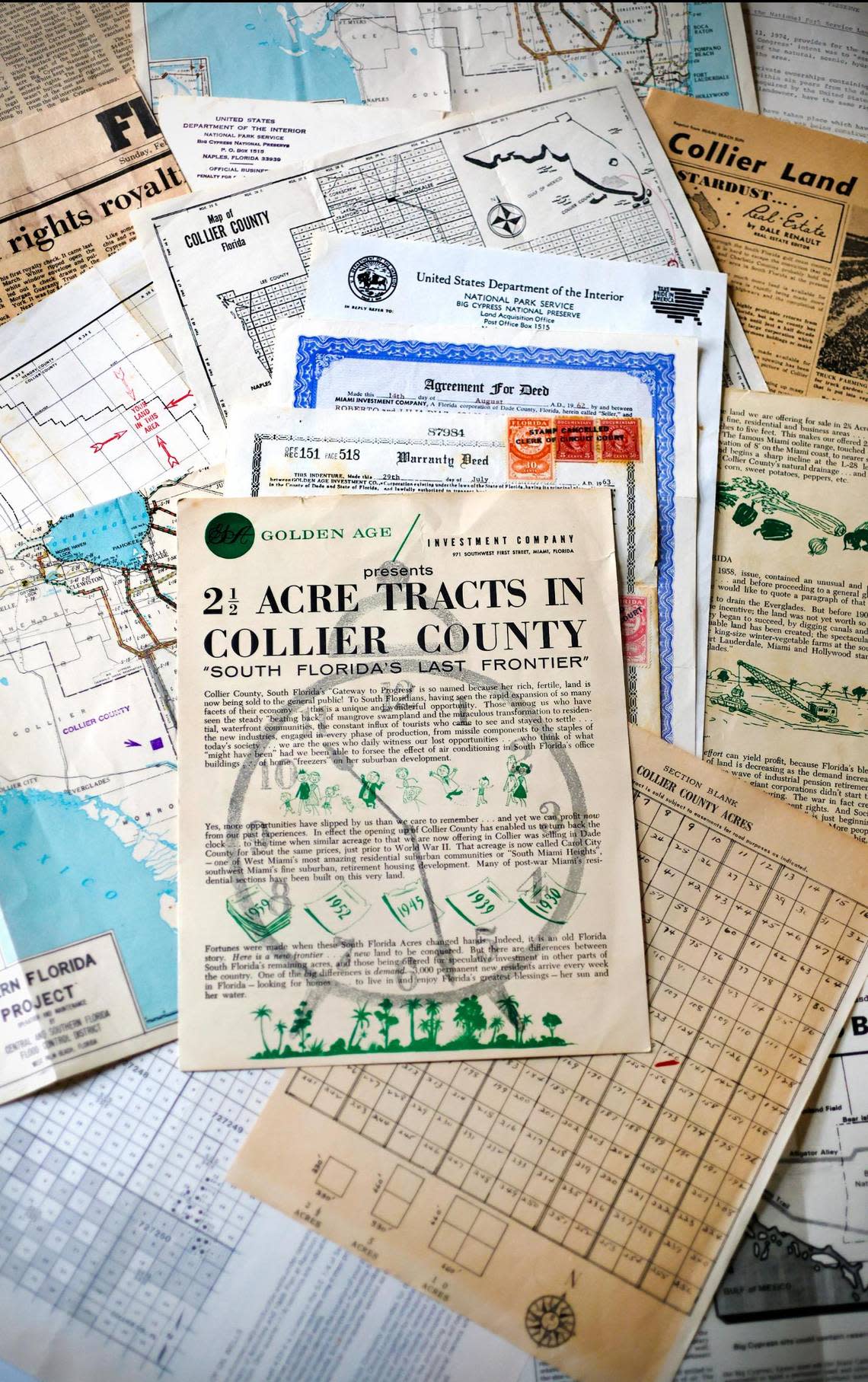
In 2020, Gov. Ron DeSantis ordered the state to buy a 20,000-acre swath of land near Broward County where the owners had recently won the right to drill for oil over state objection. “This will permanently save the land from oil production,” DeSantis said at the time.
But efforts to buy out swaths of Big Cypress, which covers far more land, have been less successful.
In the 2000s, then-Gov. Jeb Bush tried to orchestrate a buyout to protect the Everglades, right around the time the Colliers started seismic testing to look for new potential wells.
The Colliers signed an agreement with the federal government in 2002 to sell their mineral rights for $120 million and suspend plans for 26 new exploratory wells, but it fell through over bickering over the price.
Previous quotes for those mineral rights have been all over the map; various government estimates ranged from $5 million to $235 million.
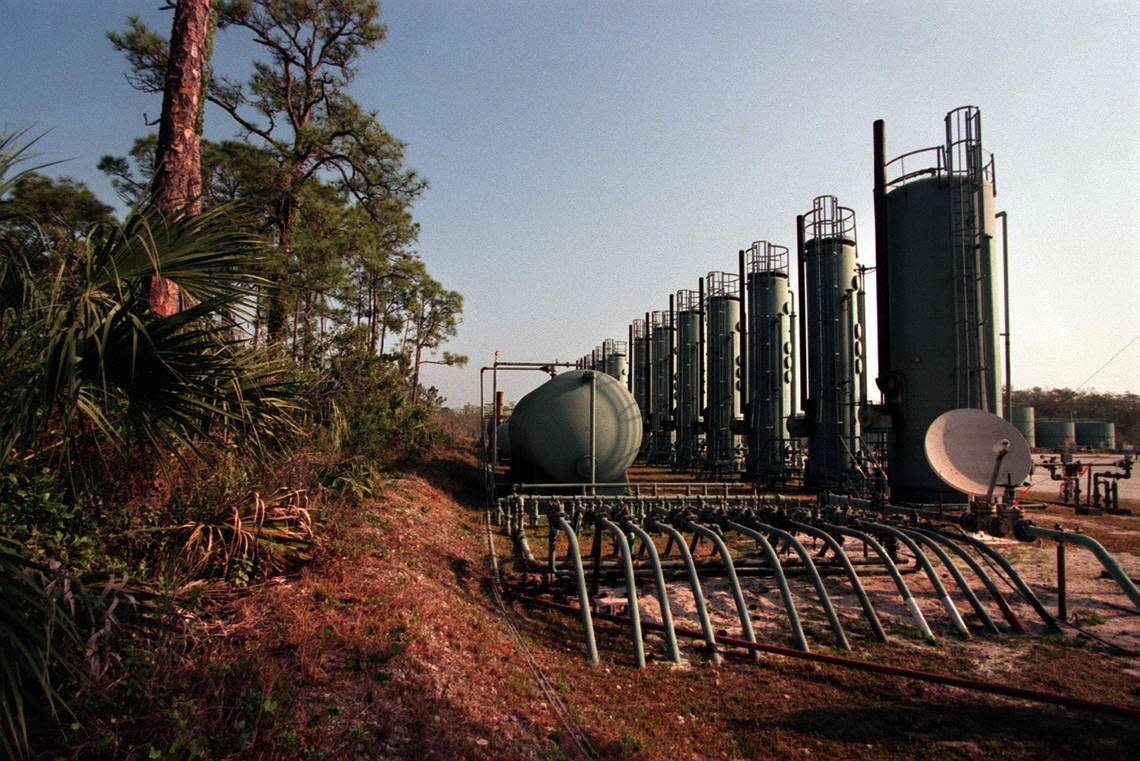
This time, though, the deal makers are determined to land on a number to which everyone can agree.
Enter David Houghton, director of WildLandscapes International. His nonprofit is helping the Miccosukee tribe seal the deal with the Colliers, as well as the federal government.
“We’re the real estate geeks in the back making it all happen,” he said.
His team worked for years with the Colliers to hammer out an agreement that now covers 420,000 acres, including the spots where Texas-based Burnett Oil has been hunting for new wells. Crucially, that involved arriving at a price everyone was happy with.
The Colliers are officially on the hook to sell those mineral rights if the price is above or at the number they agreed to. If it ends up lower, they still have the option to sell but aren’t obligated to.
Houghton wouldn’t share the exact figure the Colliers agreed to but said they negotiated the deal when oil was going for far less per barrel than it is now, so he has high hopes.
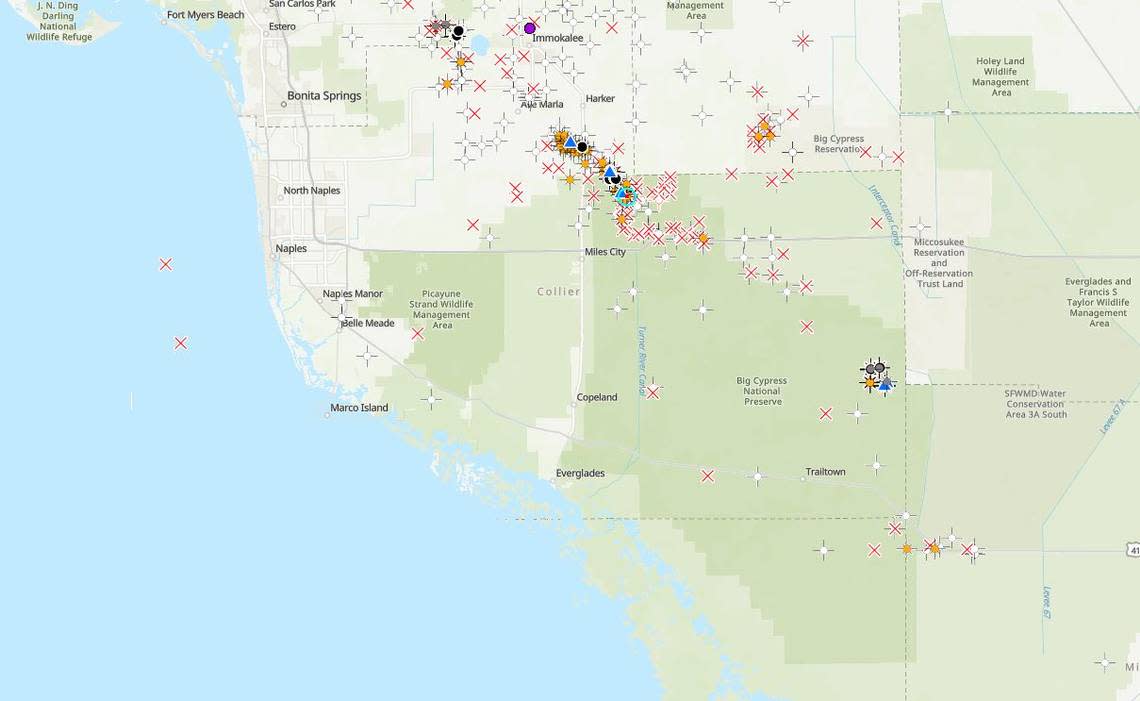
The next step is for an accounting firm to complete an appraisal, which is due in April. The firm, hired by WildLandscapes and approved by the Department of the Interior, will hand over its estimate for what the mineral rights are worth. If it’s within the range the Colliers agreed to, then it’s up to the federal government to scrape together the cash and complete the sale.
Houghton said he’s hopeful that, if they get that far, Florida legislators’ bipartisan skill at finding federal money for Everglades restoration will apply here, too.
“Right now we know that there is significant interest by the Florida delegation to pursue this. We would not be running around spending huge amounts of money trying to figure this out if there wasn’t interest,” he said.
And there are promising signs the agreement could pan out. This summer, the Collier family sold more than 11,000 acres of its land near Everglades City, including the mineral rights, to the state for just under $30 million. Houghton said this was the first time the Colliers have outright sold their mineral rights.
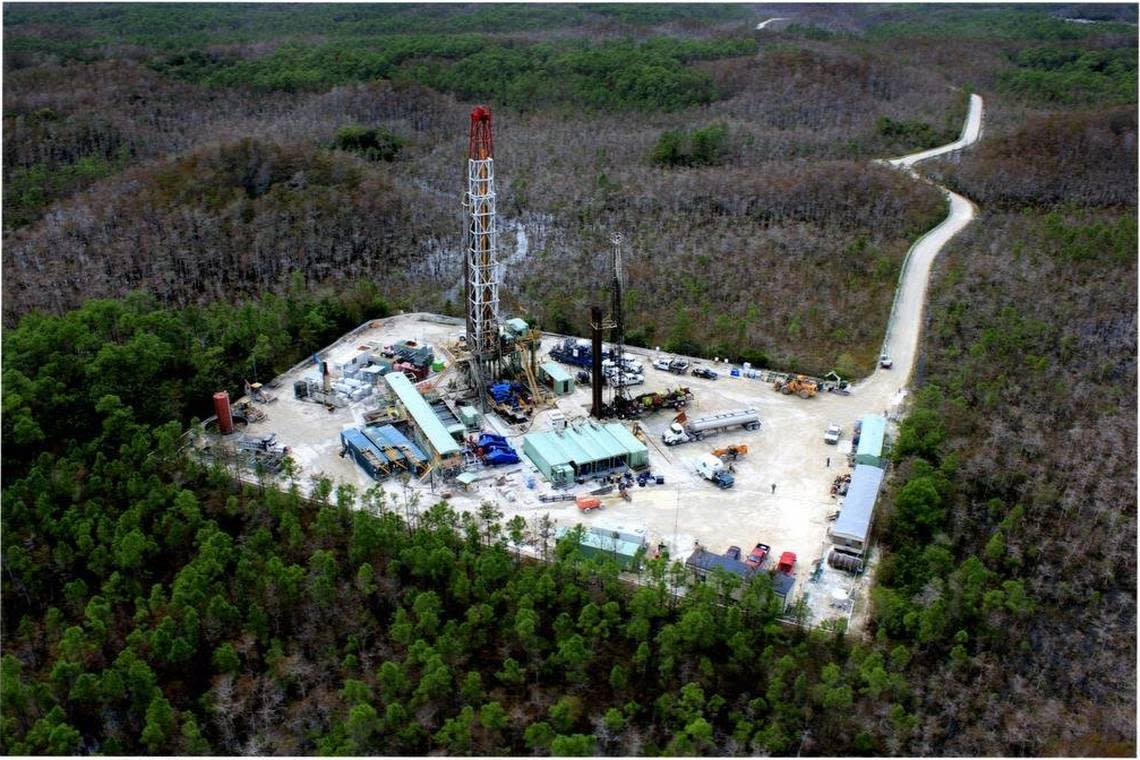
But for all the big ideals of this plan, what it won’t do is stop the relatively small oil industry that still operates within the boundaries of the preserve. Within Big Cypress alone there are 11 producing wells — five at the Raccoon Point drill site to the east and six at the Bear Island site to the north.
Cypress, of the Miccosukee tribe, said the plan is to come back for those mineral rights next, in future phases of the buyout plan.
That could put at least a decade between the end of current drill operations in the preserve, but Cypress said the tribe is willing to be patient.
“It’s obvious that this area has been changed forever. And that happens a lot out here with the Everglades,” he said. “We talk about restoration, and trying to get back to things that are where they were. And that almost may not be possible. But you know, we got to do the best we can to get as close to it as we can.”
Why are we still drilling?
According to state data, those two sites within Big Cypress have collectively produced about 36 million barrels of oil since they were first drilled in the 1970s. That’s peanuts compared to any of the gushers in Louisiana and Texas, the heart of the nation’s oil industry, and it’s even dwarfed by the state’s other oil resources in the Panhandle, where about three-fourths of the state’s oil is produced.
In 2022, Texas produced nearly two billion barrels of oil — double what all of Florida has produced in nearly a century.
The industry directly employs about 700 people statewide, according to a 2022 report on oil drilling in Big Cypress. Oil drilling brought in about $25 million to Florida’s economy in 2020.
As that report put it: “Broadly speaking, oil production does not matter to the Florida economy, and Florida does not matter to oil production.”
Beyond the economics, scientists around the globe have made excruciatingly clear that the world needs to stop burning fossil fuels as fast as possible to avert the worst impacts of climate change. Those effects, like hotter days, rising tides and more powerful hurricanes, are already disproportionately harming Floridians.
So why keep drilling?
“To me, the juice is not worth the squeeze,” said Edward Glab, director of the global energy forum at Florida International University and a former longtime executive at ExxonMobil.
“If you look at a risk-reward equation, you’d have to come to the conclusion that we have no business drilling for oil in the Everglades, anywhere. We don’t need it. It’s not the sort of oil that’s really in demand or commands a premium price, but I think more importantly there’s always that risk of contamination and some sort of spill,” he said.
Glab said the oil found in the area is thicker and more expensive to process. That might be why big companies, like Exxon, have sold off the wells they originally drilled to smaller companies, he added.
Breitburn, the Texas-based company that runs the wells within Big Cypress, did not respond to multiple requests for comment.
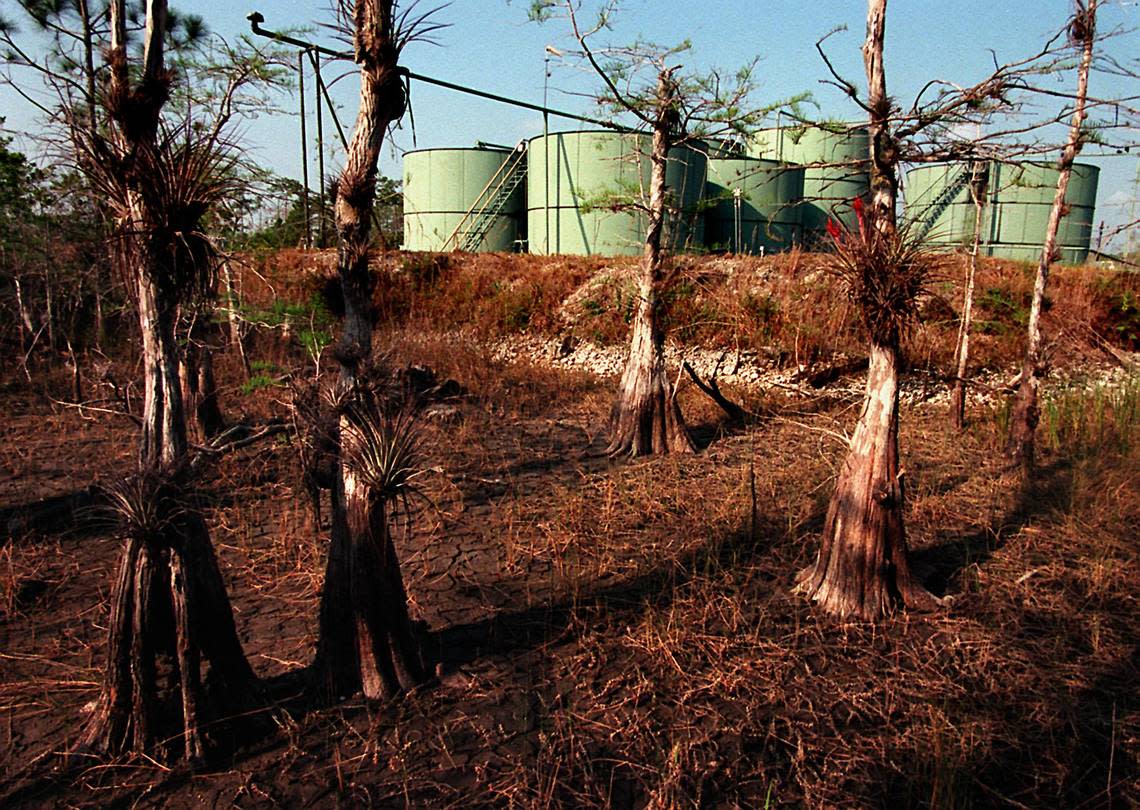
Evan Hjerpe, executive director of the nonprofit Conservation Economics Institute and author of the report on oil drilling within the preserve, said the math must still make sense for companies like Breitburn, or they would have exited the business long ago. Some companies like to hold on to low-performing wells like these so they have extra resources to ramp up production when oil prices skyrocket.
Plus, he said, properly closing a well can be an expensive and tedious process.
“A lot of the times it’s cheaper to keep a marginal well in production than it is to do a full closure and reclamation of the well,” Hjerpe said.
And yet, companies are still asking the state for permission to drill more than two miles into the earth for their own shot at black gold.
Unhealed wounds remain
Texas-based Burnett Oil won the right to start exploring for oil in Big Cypress in 2017. That meant big, heavy trucks grinding through trees, sinking into the mud and pounding the ground in search of the telltale vibration signal that there’s oil down below.
But in 2022, Burnett withdrew its request for a permit. Environmental groups called it a victory.
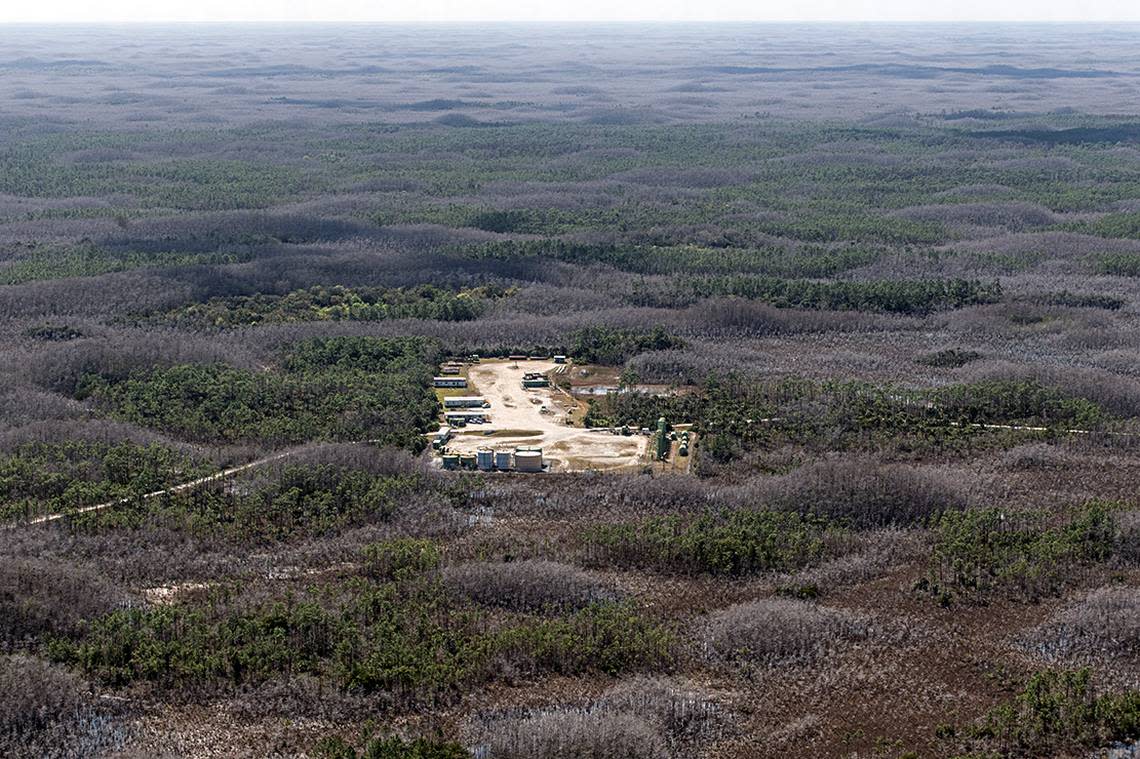
And now, seven years later, the scars of those prospecting efforts remain. A report from the National Park Conservation Association found that more than 500 of the preserve’s namesake cypress trees were felled, and in their absence, invasive species like Gulf Coast spikebrush and old-world climbing fern took over. In other places, the tracks left in the soft mud by 33-ton vehicles are still visible.
“We’re talking about zero regeneration in those damaged areas,” said Melissa Abdo, author of the report and Sun Coast regional director for NPCA.
According to Burnett’s permit, they were supposed to restore the area after they finished looking for oil by replanting 1,500 cypress trees. So far, the NPCA report found, it hasn’t replanted any.
That’s why Abdo said she supports a permanent end to oil exploration and drilling in the preserve through the Miccosukee-led buyout.
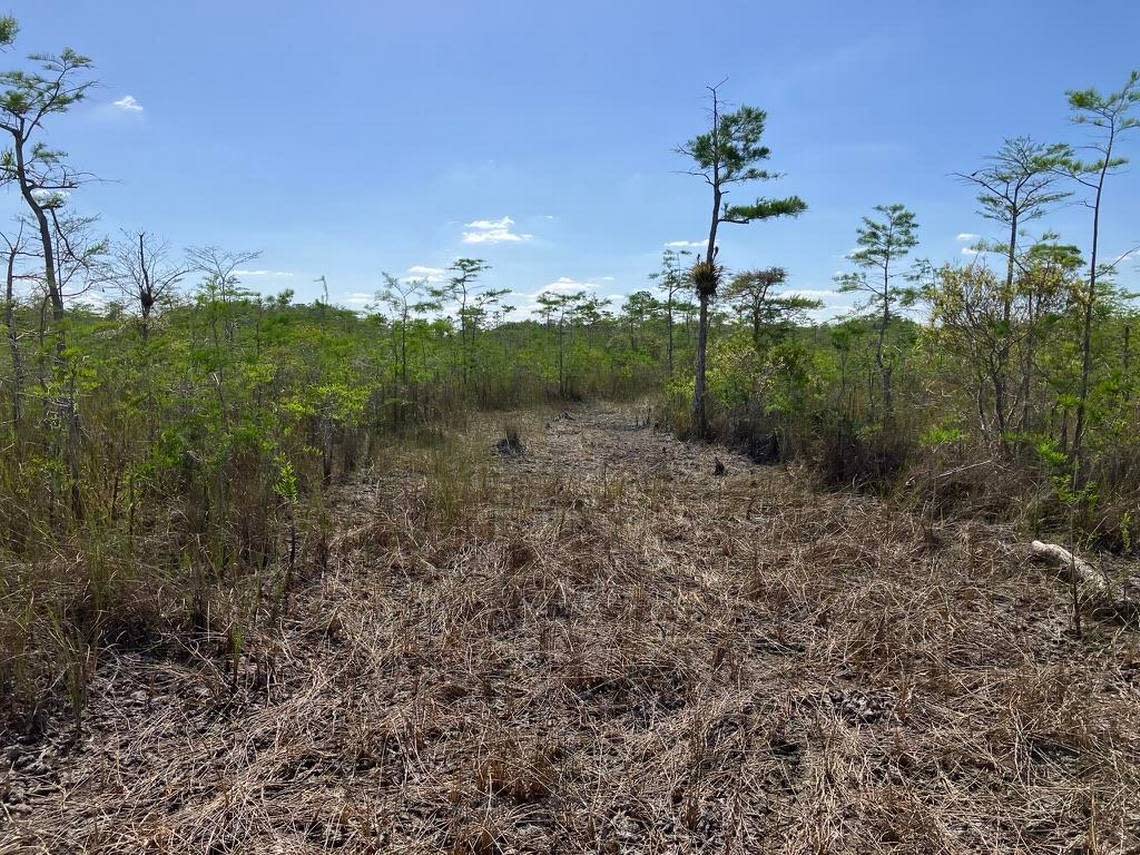
“Florida is heavily reliant on our environment for our economy. If we’re looking forward, it just doesn’t really make economic sense to permit one company’s private economic gain to be had at the cost of all the environmental restoration gains we’ve made or all those eco-tourism dollars Florida relies upon,” she said.
“Why risk all of our environmental progress in Everglades restoration for what is, in effect, a few drops of oil?”
Miami Herald Staff Writer Clara-Sophia Daly contributed to this story.
